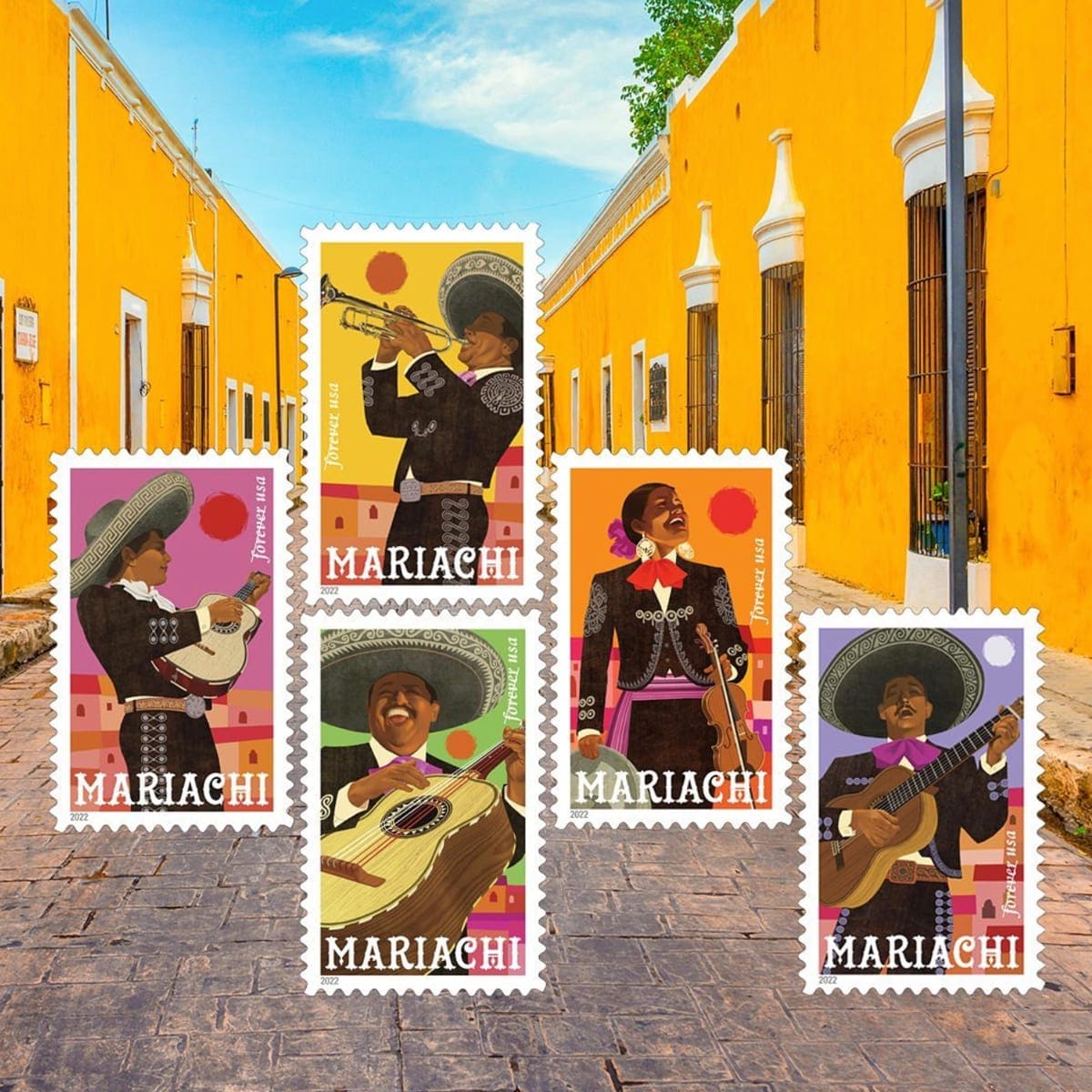In 2011, UNESCO recognized mariachi as an Intangible Cultural Heritage, and now the U.S. Postal Service is celebrating Mexico’s traditional music by unveiling a pane of 20 Mariachi Forever stamps. “The Postal Service is proud to unveil these new Mariachi stamps to celebrate the exuberant sounds of this music that is an integral part of Mexican American culture and has fans around the world,” said Peter Pastre, the Postal Service’s government relations and public policy vice president, who served as the stamp ceremony’s dedicating official.
“Today, the sound of mariachi is in the air, with singers infusing the music with tales of life and love and vibrant dancing as this celebration will continue with these 18 million postage stamps that are now on sale at Post Offices across America,” he said.
Monica Trujillo, the Mariachi Spectacular de Albuquerque’s educational and artistic conference director; Brian O’Connell, chief financial officer and chief operating officer of Atrisco Cos.; and Amelia Garcia, assistant principal of Ysleta High School in El Paso, Texas, also joined the celebration.
Created and designed by Rafael López under the art directions of Derry Noyes, each stamp features a musician dressed in the traditional outfit of mariachi performers while playing one of five iconic mariachi instruments: guitar, guitarrón, vihuela, violin, and trumpet.
The stamp also features geometric shapes in the background as a nod to Mexican villages, where mariachi music originated.
“It is our honor and pleasure to have Mariachi Spectacular de Albuquerque’s 30th Annual mariachi conference selected to partner with the U.S. Postal Service to launch this exquisite Mariachi Forever Stamp collection,” said Monica Trujillo. “Through our music and the special memories evoked by these skillfully rendered works of art, it is our hope that each and every person that comes across these stamps can experience some of the magic that we get to experience with every note, lyric, and nuance that is mariachi.”
“Mariachi” refers to several things: to the music itself, to an individual musician or an ensemble of musicians, and, when used as an adjective, to anything identified with the music — be it dance or costume or culture. The first known written reference to the word “mariachi” was made in the 1850s, but the music’s roots stretch back long before.
“Growing up, I remember nostalgic weekends listening to the uniquely Mexican sound of mariachi music in Plaza Garibaldi in Mexico City,” said stamp artist Rafael López. “Mariachi music is an emblem of Mexican cultural heritage with roots in the United States and followers around the globe, and I’m excited and honored to share the vibrant spirit of this music with these stamps.”
According to the USPS Postal Service, although mariachi music had been in the United States for many years, by the 1960s, American churches, schools, and universities began to develop and sponsor mariachi programs that produced new generations of musicians and enthusiasts. Immigrants to various parts of the United States created vibrant regional mariachi cultures that widened the appeal of this traditional music to new audiences. In addition, the American mariachi movement is being disseminated by first-, second-, and third-generation Mexican Americans as a way of expressing ethnic pride and of staying connected to their heritage.
In 2020, Google also welcomed all its guests to the rhythm of “Cielito Lindo.” The search engine temporarily altered its logo to pay homage to Mariachi’s musical genre, described as the quintessential element of Mexico’s rich cultural heritage.
The animated Google Google shows illustrations of a group of musicians (charros and charras) dressed in traditional clothing (decorated pants or a long skirt, short jackets, silk ties, wide-brimmed sombrero, and other accessories) playing a guitarrón (a six-string bass), vihuela (a five-string guitar), violin, trumpet, and a harp.
,type=downsize)
